Even though automobile production wouldn’t be suspended until 1942 due to the war effort, materials and supplies were already getting hard to come by in 1940. That’s the year the seller’s Plymouth Road King was built, one of the company’s top showroom movers and shakers. Not much is known about this Road King other than it appears to have been barn-bound for quite some time and doesn’t run. But it may represent a solid foundation to rebuild on. Located in Dixon, California, this old Plymouth is available here on Facebook Marketplace for $6,500.
Plymouth’s cars had no dramatic changes from year to year, before and after World War II. But some improvements would be made along the way, such as replacing cloth roof inserts with steel panels and moving headlights and taillights into the fenders. They also tinkered with the 201 cubic inch inline-6 found in the cars, increasing horsepower output while squeezing a little more mileage out of soon-to-be rationed gasoline.
The 1940 model year for Plymouth brought a new transmission with blocker-type synchronization, which made for much easier shifting of gears. Doors now had rotary safety latches with hinges being canceled. The cars had sealed beam headlights and running boards were on their way out. Production for Plymouth reached 430,200 autos for 1940, which includes more than 55,000 Road King 2-door touring coupes, which we believe is the seller’s car.
We’re told the seller’s Plymouth has little to no rust (at least that’s visible) except on the chrome, but the blue/green paint has gotten tired. It’s said to be a complete automobile, which would be important when initiating a restoration project. At 100,000+ miles, the car isn’t running and the only repair that the seller mentions is the need for an exhaust spring. For being more than 80 years old, this old Plymouth looks to have more than held its own.





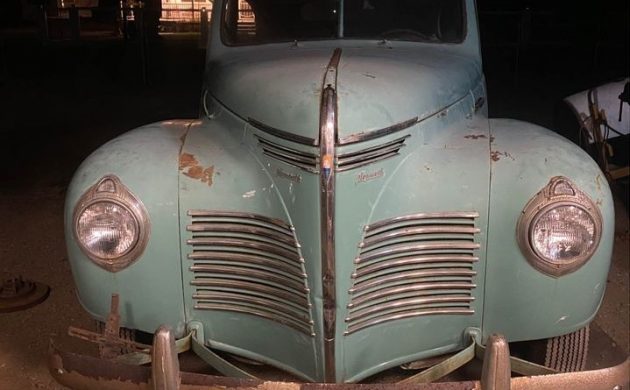
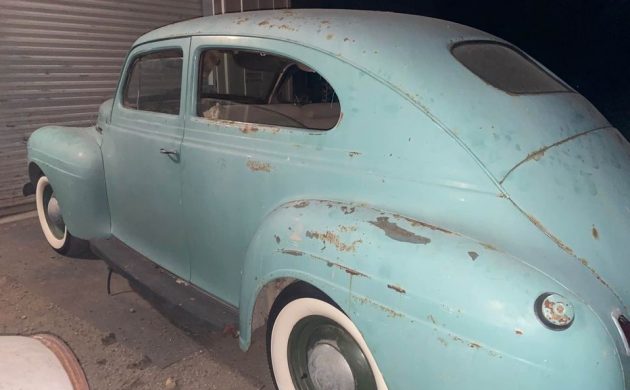
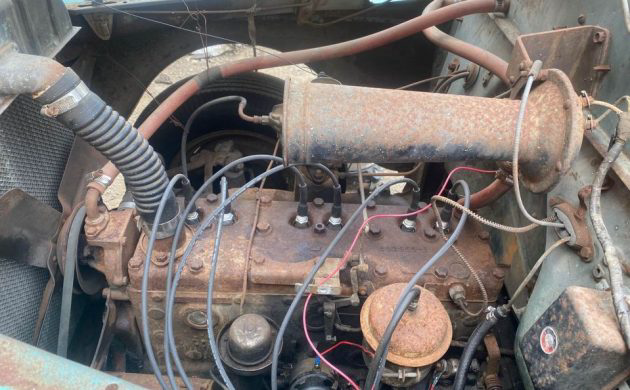
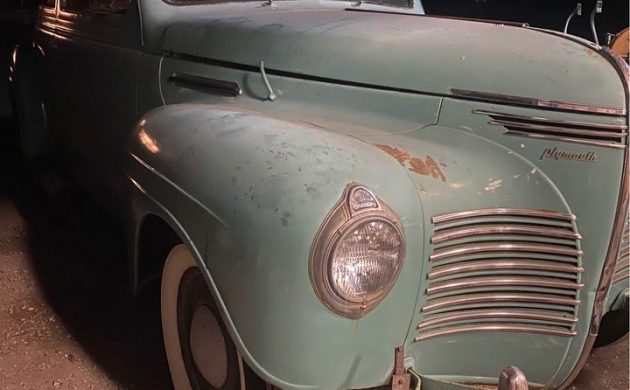



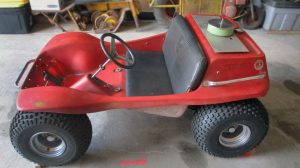


What a nice rig. I would bet it was drove to its resting place,maybe to hide it from being being sent for scrap for war efforts. I could be in the wrong era. It just looks like it was cared for,then parked for non machinal reasons. I might join in on the bidding-I like it that much, maybe it would run with the basic stuff gone thru. That would be with a good cleaning just clear coat the outside and make the int. do able. at a car show a friend bought a Studebaker4 door. We all gave him a bunch of guff,it only had 40k some miles. Sat .for 50 years and needed thefuel and brakes worked on and then they the usual stuff. Ran smooth,so much fun to ride in. He paid $750 sold it for $2800 in 2 weeks.
Why would a 1940 car have been scrapped for a war that ended in 1945?
They were scrapping teens and twenties era cars for the war effort, not brand new cars.
I was just a kid back then – BUT – few families had more than ONE vehicle. That one was either used for “work” or reserved for hauling the family to church or shopping. Most people walked – except in inclement weather.
Beginning Dec 7 1941, restrictions were placed on EVERYTHING in support of the war effort. A lot of people puit vehicles on “blocks” to preserve tires, etc, and taken down only for uses listed above.
Keep in mind that nearly ALL rural people and many large city people NEVER threw anything anyway. As WWII increased, the government appealed to people to donate saved “stuff” for conversion to war necessary equipment and supplies.
When victory was achieved, pre-war vehicles and other things that had escaped being scapped began to reappear.
This is rather long, but it IS a response to Engident’s question. Too many people under 70 yrs old are totally ignorant about sacrifices made by Americans to secure the blessings of liberty.
Yes, we could go on n on about WW II.
My Grandfather had several dairies and one of them was a supplier to a Military base.
The T and C gas, fuel stickers for your window, had More than one use.
T stickers, Trucks, and C for cars. They were volumn, represented how much you could purchase.
Dad would fill the trucks, siphon gas for the car so he could drive his new 1941 Chevy Convertible. Ya, he bad.
He joined the Army, but grandpa had no one to haul hay, drive the trucks, etc. so, grandpa got my Dad out as the women were not able to lift n load the trucks with hay.
Dad told me many stories of how he could not keep up with all the single women and so few hours after workin 16-18 hour days, 7 days a week. Then he n Mom married in 1942. Had to sell his convertible and purchased a sedan, Chevy.
Most of the trim on this car isn’t chrome, it’s actually stainless steel. My dad had a 41 Plymouth. Loved that car.
Looks to me like all of the brightwork on this car isn’t stainless steel as it’s all rusted.
Love the stying on a 40 plymo. This one looks sweet in turquoise. had one we pulled out of a junkyard, coupe- freed up the six and drove it. 60 in second and 70 flat out in 3rd. Someone started installing an olds in it then it disappeared. no rust.
Cheers
GPC
We used to have a customer with a nice 41 Plymouth he drove as his only car. Quite often I had to go to his house jump it and more than once pull the distributor cap and get rid of condensation from sitting in a unheated garage. This was in the seventies and the owner still drove it all the time, and was no spring chicken.
good start ,good price